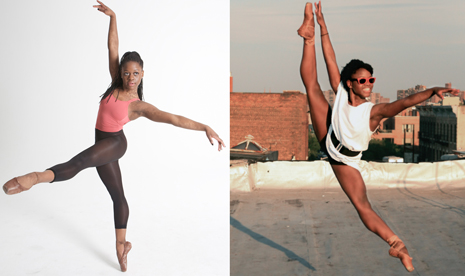DePrince is already an emerging international ballet talent of note, and she is in Johannesburg to dance the part of Gulnare in the South Africa premiere of one of ballet’s great classics, Le Corsaire. This ballet features choreography by Angela Malan, after that of Marius Petipa, and it is based on a Byronic heroic poem.
Now, what were you doing at seventeen, eh? Still trying to figure out what you were going to begin studying, when you finally began studying? But DePrince is already being marked for potential greatness as a dancer.
DePrince’s story would already be noteworthy if she were just a very talented teenager on the cusp of fame in a notoriously precise, finicky yet supremely athletic art form where the competition is intense and the mind games are almost as important as the body’s exertions. The classic films The Red Shoes, The Turning Point - or a more recent, more troubling film, Black Swan, come to mind.
But DePrince is a young, talented black woman coming into her own in an art form that was – until fairly recently – seen as the natural preserve of white performers. The usual justifications were muttered beliefs that black bodies were just too big, too broad; too, err, well-rounded to meet the classic specifications of the perfect dancer shapes decreed by balletic tradition and aesthetic sensibilities. When all else failed as an argument, gatekeepers fell back on the final redoubt of a position that it just wouldn’t look right – all those ethereal white skins and… Better they should go into the other door and do the jazz, tap and modern dance stuff, anything but ballet - but more on that story in a moment.
But for DePrince’s personal saga, there is still more. Much more. There is an extraordinary back-story – or maybe it is actually the story. As a four year old, she was one of thousands of war orphans pushed back and forth as the flotsam and jetsam of a chaotic civil war in Sierra Leone. As a four-year-old, she had just barely been rescued and placed in an orphanage near the Sierra Leonean border. Recall the worst scenes from the film Blood Diamond, perhaps, to try to get an idea of what it must have been like.
Once she was safe in the orphanage, the staff told her a family would never adopt her because she was “the devil’s child”. Really. Imagine being told that – repeatedly – as a preschooler, after surviving that barbaric civil war. But the devil’s child? Because she suffered from that skin condition, vitiglio (you know, Michael Jackson’s skin condition), where there is a loss of brown pigment resulting in irregular white patches that continue to feel like normal skin. DePrince says, with an unnerving matter-of-factness, “This is something I don’t think you should tell a child.”

For some reason, call it luck, an Olympian dice roll, whatever, as a child in that orphanage, she found a discarded magazine at the gate of her orphanage. On the cover of the magazine was a picture of a ballet dancer wearing a tiara, tutu and point shoes. Do you remember all this? she is asked. “It is very hard not to remember something like this,” she murmurs. Yes, of course. It is impossible not to conjure up the scene: The four-year-old DePrince studying the picture; what is this person doing, why are they doing it, what are they wearing? “It was a picture of a ballerina, and seeing that dancer, and seeing it at such a terrible time of my life, it just completely gave me hope and I thought to myself: if I ever got adopted, maybe I could be just like this person.”
So she hid the magazine cover in her clothing and gave the rest of the magazine to the other children to distract them. She studied this picture and decided that whatever this woman was doing, she wanted to do it, would do this too, herself, when she got older. Then there was a secular deus ex machina. Americans adopted her, despite the premonitions of imminent devil’s child-dom, and she moves to the US, where she grew up amidst a boisterous family with sisters and nieces and – miraculously – she became a normal child with dreams – and the possibility she could achieve them.
It is like a Hollywood film. Wait a second now; it is a film by Bess Kargman, First Position, released in 2011, and now coming to South Africa. It follows six young dancers from around the world as they prepare for the Youth America Grand Prix, one of the world’s most prestigious ballet competitions. And one of the stars of the film is Michaela DePrince – still just sixteen years old at that point.
Watch: Michaela DePrince - featured in "First Position" while at The Rock School
type="application/x-shockwave-flash">




